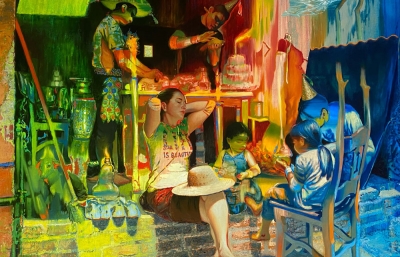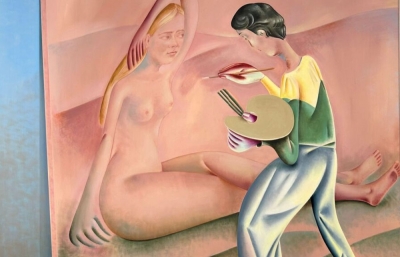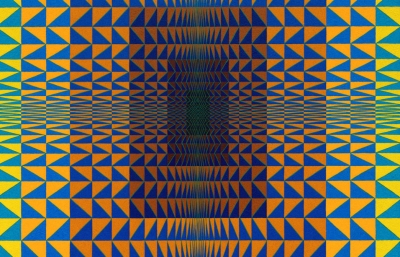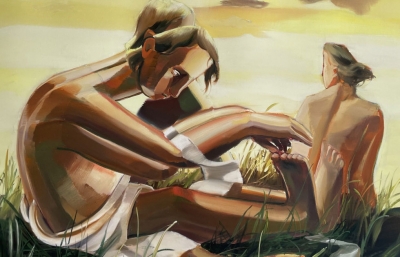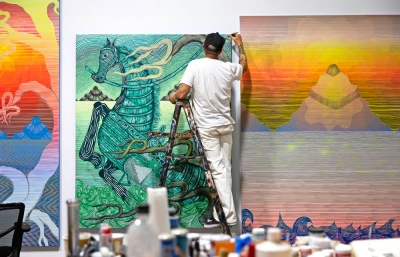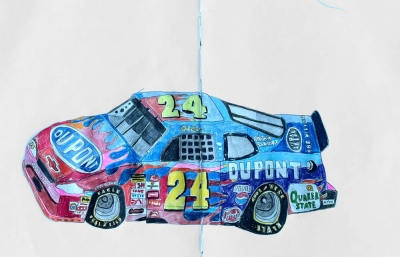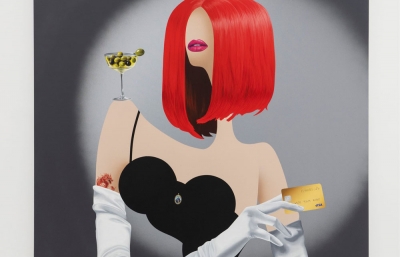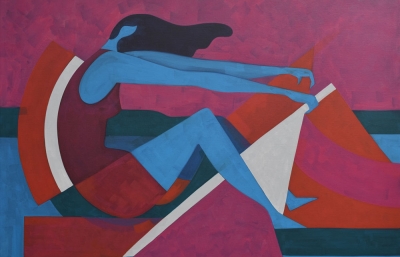Walton Ave & Friends brings together sculpted portraits from across the oeuvres of John Ahearn and Rigoberto Torres, beginning with The South Bronx Hall of Fame (1979), a suite of 21 singular busts produced at the alternative art space Fashion Moda, the site of the artists’ initial encounter. As founding director Joe Lewis wrote, “[Fashion Moda] was an outlet for the disenfranchised, a Salon des Refusés that cut across the uptown/downtown dichotomy, across the black/white/Hispanic isolation.” Their storefront castings quickly attracted a curious crowd of everyday Bronx residents: mothers and fathers running errands, children returning home from school, and patients from a nearby methadone clinic—ordinary people, unlike the war heroes, royalty, or the divine typically glorified in the pages of art history.
The artists uplift their mostly Black and Latinx subjects by depicting them, through experimentation with form and an expansive range of skin tones, with nuance and contradiction. Unlike contemporaneous sculptors whose realism manifests as allegorical subjects like Liberty or Justice, or whose figures underscore ideas of power or beauty, the works of Ahearn and Torres undeniably express the distinctive identity and spirit of the subjects from which they are cast. Their deeply humanistic approach to portraiture is based in trust (the casting process is unpleasant and vulnerable) and is also reciprocal (each subject receives a painted sitter’s proof to keep). These proofs are a point of pride for those who choose to live with them and reaffirm the idea that all lives are worthy of representation. Indeed, receiving the cast portrait is often profoundly affective and satisfies the very real human yearning to see oneself reflected in the art of one’s time. The portraits of The South Bronx Hall of Fame are positioned high above the heads of visitors, beckoning all to behold them from below similarly to the original Fashion Moda installation, though set now within the magnificent limestone walls of an Upper East Side ballroom.
Ahearn and Torres brought the life casting process directly into the community: setting up on the sidewalk beyond the walls of Fashion Moda, they worked even deeper into the community of the Bronx along Walton Avenue. Their block-party-style happenings dissolved any idea of the genius studio artist working in isolation and were instead fixtures of the community they portrayed. In 1985, the artists installed their monumental Back to School as an immersive mise-en-scène overlooking Walton Avenue at 170th Street. The high relief sculptures, presented individually and in pairs, convey the rush of excitement of a child’s first day of school after summer break. The daughter-mother pair Maggie and Connie (the former a consistent subject of Ahearn’s over the years), depicts the prepubescent Maggie toting her baby doll—an idealized image of childrearing—at the same time that her real-life caretaker, herself pregnant, lugs heavy bags of groceries needed to feed her family. Underneath them, Ralph and Kido are spotted in warm embrace; brawny Ralph, the school building’s superintendent, joyfully welcomes Kido back to the classroom, a site of self-determination. The commotion doesn’t seem to affect Jay with Bike, who straddles his bicycle, lost in thought. The scene is closely watched by Titi in Window, cast from a neighborhood woman who, although she had no children of her own, carefully ensures the safe travels of the children in her community—a catcher in the rye. The frieze installation recalls a centuries-old tradition in Western art of picturing scenes of great battles and mythologies across horizontal bands crowning temples, palaces, and monuments. Ahearn and Torres similarly monumentalize their subjects, elevating the lives and labors of familiar people to a status of great significance and splendor.



